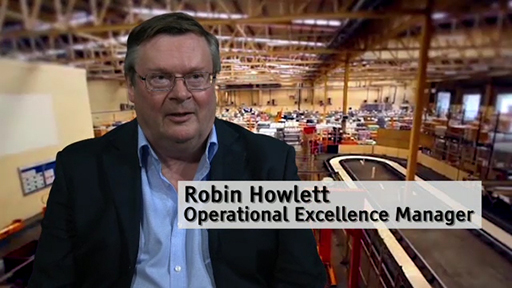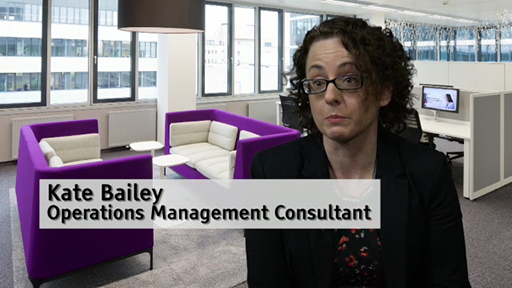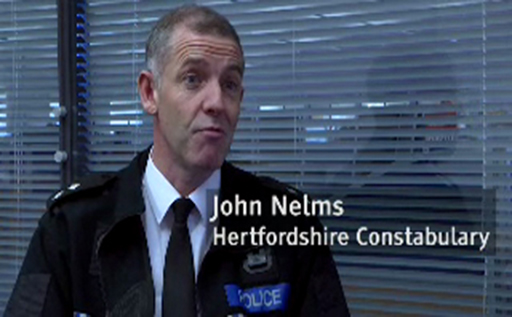3 What do operations managers really do?
In the next activity, you will take a practical look at the activities that operations managers perform as part of their daily duties. The interviews provide a good opportunity to study what operations managers do in practice, and compare the operations manager role across different sectors.
Activity 3: Assessing what operations managers do
Before you watch the interviews in the videos below, look again at the input–process–output model and the section ‘What do operation managers do?’ of the reading [Tip: hold Ctrl and click a link to open it in a new tab. (Hide tip)] (Walley, 2017).
Now watch Video 1, Video 2 and Video 3 in which different operations managers are interviewed about their role. Then answer the questions below.

Transcript: Video 1: Interview with an operations manager in the private sector (Robin Howlett from Britvic)

Transcript: Video 2: Interview with an operations manager in the service sector (Kate Bailey)

Transcript: Video 3: Interview with an operations manager in the public sector (John Nelms, Hertfordshire Police)
Apply the input–process–output model to each of the operations discussed.
Feedback
By now you should be able to apply the input–process–output framework well to each of the operations described in the videos. You can see that Robin Howlett has to manage a small number of people but the factory and distributions centres are highly automated, with lots of capital equipment. The focus is very much on keeping the plant running so that it meets its market demands and return-on-investment obligations. Robin also has to deal with input resources from outside the organisation in what is called a supply chain. You may have been surprised how many separate ingredients and packaging items there are within this supply chain. In this example, the process is readily identifiable and you can see the resources flowing through steadily. The outputs are fairly easy to define (packs of drinks).
The police example shows the real contrast between the manufacturing and the pure service process. John Nelms provides a list of inputs to the process, showing the range of resources they control both inside and outside of the operations centre. They have resources such as dog units and helicopters within their range of resources. John also describes of one of their processes – the detection and arrest of a shoplifter. You may have realised that there is much more variety in both processes and outputs in this service compared with the FMCG.
In the case of public sector operations, outputs can be tricky to define and there can be problems defining who the customer is. For a police service, who is the customer? The person being transformed is often someone who has been arrested, not the general public who pay for the service. This separation of participant, payer and beneficiary is one of the additional complexities of public sector operations.
Kate Bailey’s discussion allows you to think about management consultancy as an operation, with the inputs of skilled people, complex processes of interacting with clients and the wide range of customised outputs of solutions and advice to customers. Kate also highlights one of the biggest mistakes that managers make – they frequently don’t pay sufficient attention to the design of their processes.
- What tasks do the three managers spend time on most days? Does this vary by type of operation in any way?
Feedback
You can produce an extensive list of tasks that the operations managers have identified and the generic problems can be very similar in each of the operations. One good way of listing these is to follow the example of Slack et al. (2007) and use the three types of activity – design, planning and control, and improvement – to classify these operations management tasks. You will have seen this in the reading.
| Design tasks | Planning and control | Improvement |
|---|---|---|
| Product/service design | Workforce planning | New product introduction |
| Layout and flow | Shift patterns | Continuous improvement |
| Work allocation | Team-based working | |
| Scheduling of orders | ||
| Capacity plans | ||
| Stock control | ||
| Quality planning and control | ||
| Error correction |
All the operations managers mention some aspects of planning and control. The police operations involved rapid response to high risk incidents and prioritisation of work. The FMCG example showed how the operation was often only given 24 hours to respond to an order from a large retailer. All of the operations experienced fluctuation in demand, often through seasonal patterns, based on factors such as time of day, day of week and weather patterns. All of this complexity and variety needs to be managed. All of these operations would be easier to manage if there was no seasonality or variety. This highlights that operations managers often see change and innovation as a disruption to an otherwise stable process.
Robin Howlett explained the changing role of the operations manager where there is now much more emphasis on continuous process improvement.
- What do the managers say about coping with innovation and change?
Feedback
One thing is clear from each of the interviews: operations managers much prefer stability and repetition to constant change of processes and outputs. In the case of the manufacturing example, the introduction of new products or platforms means that parts of the process need to be entirely reconfigured over a considerable period of time. During the transition period, there are problems with coping with much greater complexity and variety in the process. In the service operation the managers need to think about employee knowledge and skills, any redesigning of the process or layout (because this often includes a change to the service concept) and issues of obsolete stock.
A key issue is that the external environment often changes faster than operations can adapt. Similarly, there are internal pressures to cope with new ideas or innovation, such as new product introductions. As Walley (2017) states, operations managers are often responsible for the delivery of strategy or ideas, even when they have had little or no involvement with them. Those outside the operations function have to understand the time, skill and effort it takes for operations to be adapted to these change requirements.
